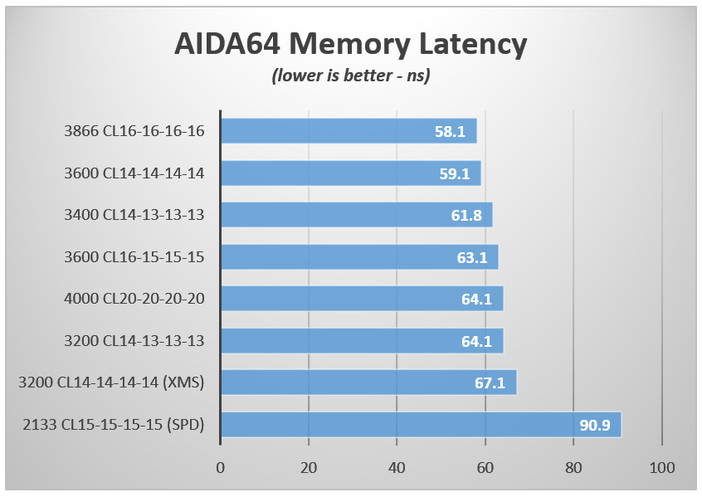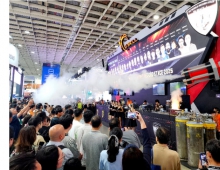G.Skill Trident RGB 3200 CL14
6. Overclocking comparison
Review Pages
After so many tests, which one of the memory settings will give us the best possible performance? Well that depends on many factors and most performance differences would be minimal or perhaps close to the statistical % error since each run doesn't give 100% times the same exact result.
On Ryzen systems, the latency and available bandwidth for all connected components like the DRAM controller, PCIe bus, etc. is based off the Infinity Fabric speed (FCLK). All of this occurs in an interconnect AMD calls “Infinity Fabric.” The Infinity Fabric clock speed (FCLK) is configurable and directly relates to the memory clock (MCLK). For Ryzen CPUs, most will run a 1:1 ratio between FCLK and MCLK, which can be considered “synchronous” operation, up to 1,800MHz. There may be instances where the FCLK may be set to operate in an “asynchronous” mode (not a 1:1 ratio), which may introduce increased latency, thus negating any performance benefit. However, for extremely high MCLK values (> 3,600MHz), asynchronous operation may actually increase overall performance, at the cost of stability
At the 3600MHz setting we are reaching the “synchronous” operation, since the system memory is “DDR” (Double Data Rate) the actual memory clock speed of the RAM (MCLK) is 1,800MHz. Why is that? Double data rate defines the way data is sent with every clock cycle; clock cycles have both a rising and falling edge. Older Single Data Rate memory (SDR) would only send data signals on the rising edge, but DDR sends data signals on both the rising and falling edge, effectively doubling the rate in which data is transmitted, and this gives us our effective memory clock speed of 3,600MHz.
Probably the 3600 @ CL14 is the best possible choice if you want to overclock your memory kit with 1.45V else, the 3200MHz @ CL14-13 is you next best choice.

The DRAM Ryzen Calculator also includes a Memory Bench software, the best score came from the 3866MHz since it had the highest overall performance.

The AIDA64 gave us reading/writing/copy/latency results for all the memory speeds/timings we tried.




Lastly, with the HWInfo software we saw what kind of temperatures got from our memory kits at various speeds (Celsius). As was expected the highest temperatures got from the 1.50V with memory modules reaching up to 45 Celsius for DIM2 (close to CPU)

Review Pages





















